|
|
|
Introduction of Varanasi |
|
Varanasi
(the city of light) is the most holy city of India. It is also well
known
by the name Banaras or Kashi. Varanasi is the most sacred city which
is located on the northern bank of the River Ganges in Uttar Pradesh.
The name of Varanasi is derives from Varuna and Asi, which are the two
tributaries of the Ganga. Varanasi is located between these 2
tributaries.
Varanasi is about 300 kms from Lucknow.Varanasi is also known as "the
religious capital of India", "the city of shiva", "the city of
learning" and "the holy city of India".
Varanasi is very popular Hindu pilgrimage site in India.
People from all over the world come to visit Varanasi, the oldest
living cities in the world. Varanasi is located at an elevation of 81
meters above sea level. Varanasi is not only associated with Hinduism
but it is also associated with Jainism and Buddhism.
|
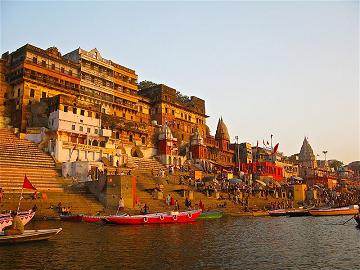
Gangaghat |
|
|
|
History of Varanasi |
|
Varanasi
was built around ten centuries before the birth of Christ as per
legends. Varanasi is also mentioned in various holy epics like
Ramayana, Mahabharata, some Buddhist texts and in Vamana Purana.
Varanasi wasn founded by Lord Shiva according to legends.
Varanasi
was also known by various other names such as Mahasmasana, Surandhana,
Brahma Vardha, Anandakanana, Avimuktaka, Ramya, Sudarsana, Kasi,
Banaras and Kashi. Kasikanda described the splendor of the city
Varanasi about 5000 years ago in 15,000 verses in the Skanda Purana.
The city of Varanasi is also visited by the Pandavas, the heros of the
Hindu epic Mahabharata, Pandavas visit this place in the search of
Lord Shiva. In Skanda Purana Lord Shiva says, 'the three worlds from
one city of mine and Kasi is my royal palace'. In the 4th and 7th
century A.D well-known Chinese travellers, Huien Tsang and Fa-Hsien
also visited this city. Varanasi also experience a cultural revival
during the rule of Akbar in the 16th century. Before the foundation of
Muslim rule in India, Varanasi was the capital of the Gahadavala king,
Jaichand, who was the most powerful Indian king. Varanasi formed part
of the province of Oudh under the rule of Mughals. There are also
legends associated with Varanasi which signifies the importance of the
city in the 5th century B.C. In the 5th century B.C, one of the chief
disciples of the Buddha, the Ananda, had wished that instead of
Kushinagara, Buddha had died in Varanasi. |
|
|
|
Tourist Attraction in Varanasi |
|
Prominent
tourist attractions in Varanasi are as follows -
Ghats
One of the prominent tourist attraction in Varanasi are the Ghats of
Varanasi. Varanasi has about 85 Ghats which are located on the west
banks of the river Ganges. Some of the Ghats of Varanasi are
associated with legends. Morning boat ride on the Ganges across the
Ghats is very popular among visitors. Devotees from all over come to
visit this place to meditate and to offer holy prayers with the aim to
purify themselves by taking a bath in the holy river Ganges.
Temples
Kashi Vishwanath temple or the Golden temple – Kashi Vishwanath temple
is also Known as Golden temple. This temple is devoted to Lord Shiva.
Other temples which can be visited in Varanasi are Bharat Mata temple,
Durga temple
Mosques
Another prominent attraction in Varanasi is the great mosque of
Aurangzeb.
Jantar Mantar
Jantar Mantar which is observatory is founded in the year 1737, it is
situated above the Ghats on the Ganges. Jantar Mantar has unique
instruments from which measurements can be done clearly.
Ramnagar Fort
Ramnagar Fort was founded by Kashi Naresh Raja Balwant Singh in the
18th century, it is located near banks of River Ganges. It is in
Mughal style of architecture.
Sarnath
and Bodhgaya
Sarnath
and Bodhgaya are also situated near by Varanasi. Sarnath is
the oldest museum museum near Varanasi in Uttar Pradesh. Sarnath
museum has a rich collection of Buddhist antiquities. Some other
structures at Sarnatha are the ruins of stupas and monasteries & the
ruins of the brick temple representing the Mula- Gandha Kuti. Dhamekh
Stupa is most magnificent among all of them which is decorated
delicate floral carvings in the lower part. Sarnath has a very rich
collection of Buddhist sculptures which encompass several Bodhisatva
and Buddha images which can be seen at Archaeological Museum, Sarnath.
|
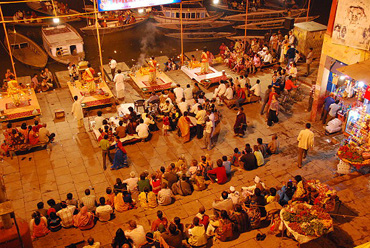 |
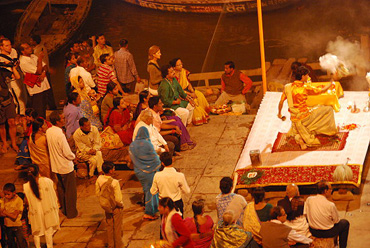 |
|
Ganga Aarti |
Ganga Aarti |
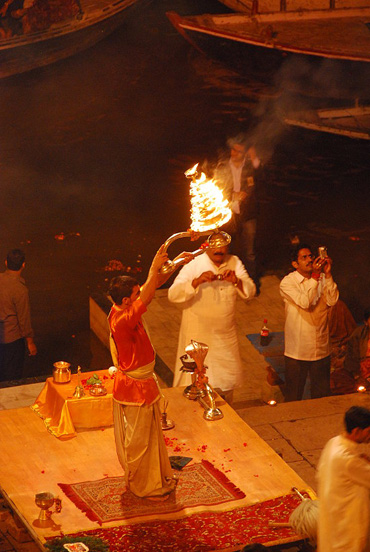 |
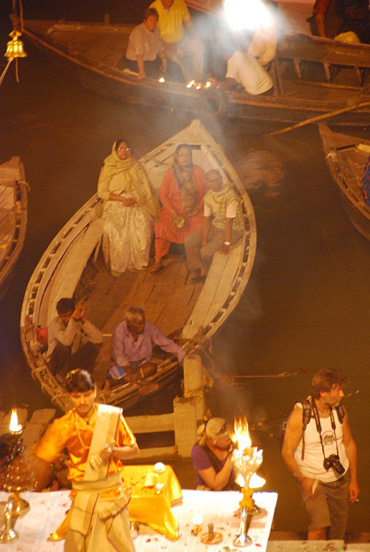 |
|
Ganga
Aarti |
Ganga
Aarti |
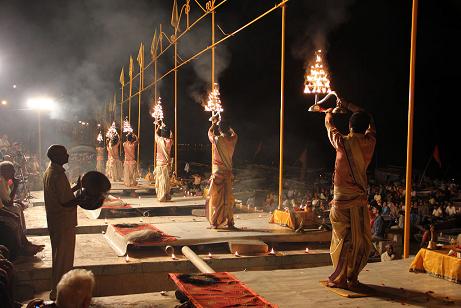 |
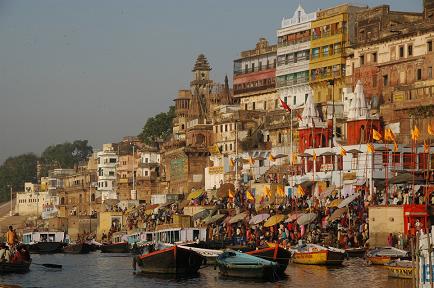 |
|
Ganga Aarti |
Varanasi Ghat |
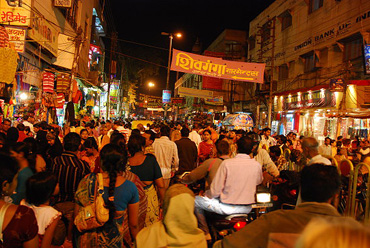 |
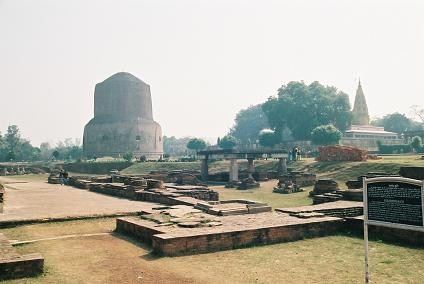 |
|
Varanasi Market |
Sarnath |
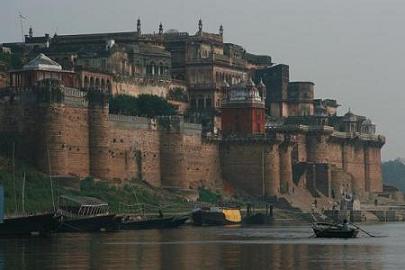 |
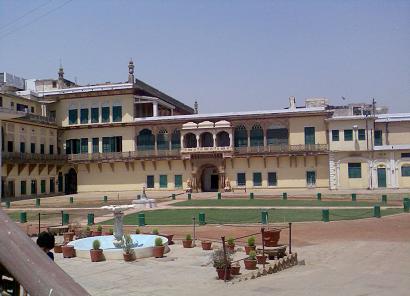 |
|
Ramnagar
Fort |
Ramnagar
Fort |
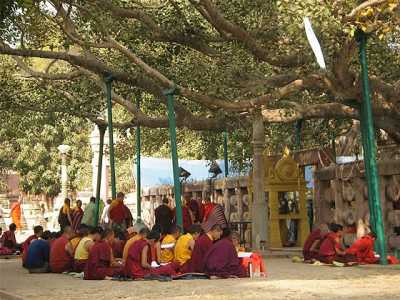 |
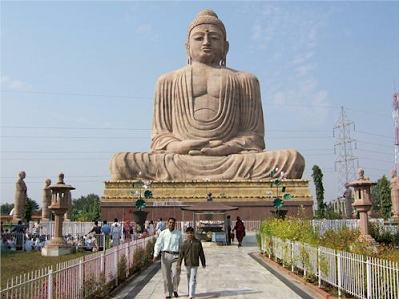 |
|
Bodhgaya |
Buddha
Statue |
|
|
How to Reach Varanasi |
|
By
Rail:
Varanasi is well connected by rail. Varanasi is directly linked with
all the main cities of the country like Bombay, Madras, Gwalior,
Guwahati, Lucknow, Calcutta, Indore, Meerut, Delhi and Allahabad.
By
Road:
Varanasi is linked by road to various cities of the country. It is
about 400 kms from Khajuraho, 125 kms from Allahabad, 760 kms from
Delhi and 560 kms from Agra.
By Air:
Varanasi is also well connected by air. Daily flights operate between
Varanasi and New Delhi. Various flights also operate between Mumbai,
Kolkata, Bhubaneshwar, Lucknow and Khajuraho. |
|
|
|
You will visit
“Varanasi”
during the below Tours of Rajasthan and North India. |
|
|
|
 Delightful Rajasthan and
North India Tour (Group Tour) (Including Varanasi)
Delightful Rajasthan and
North India Tour (Group Tour) (Including Varanasi)

20 Days / 19
Nights
Delhi - Mandawa - Bikaner - Jaisalmer - Osian - Jodhpur - Ranakpur -
Udaipur - Pushkar - Jaipur - Fatehpur Sikri - Agra - Gwalior - Orchha
- Khajuraho - Varanasi - Delhi
 19 Days Rajasthan and North
India Tour (Including Varanasi)
19 Days Rajasthan and North
India Tour (Including Varanasi)

19 Days / 18
Nights
Delhi - Shekhawati - Bikaner - Jaisalmer - Osian - Jodhpur - Ranakpur
- Udaipur - Pushkar - Jaipur - Fatehpur Sikri - Agra - Khajuraho -
Varanasi - Delhi |
|
|
|
|
|
|
|
|
|